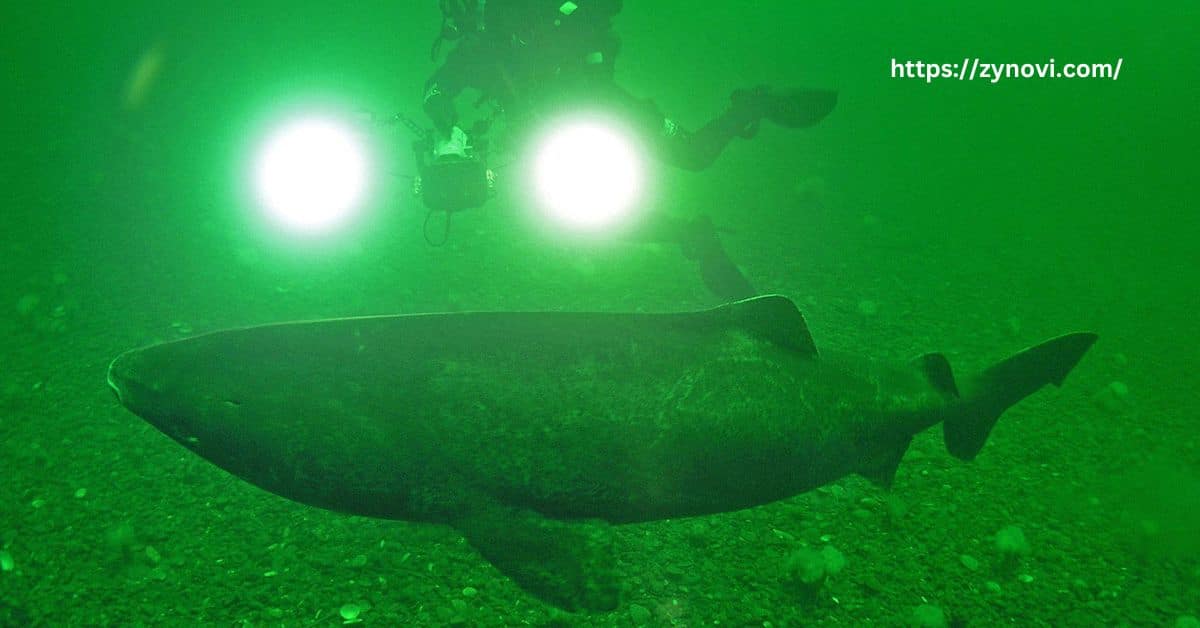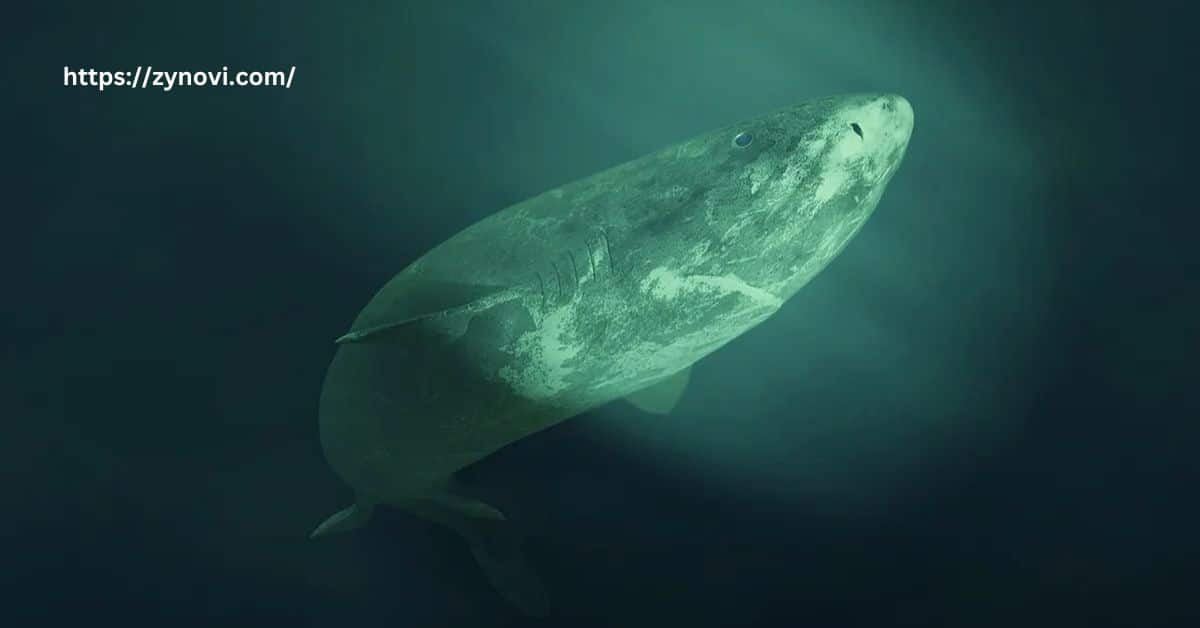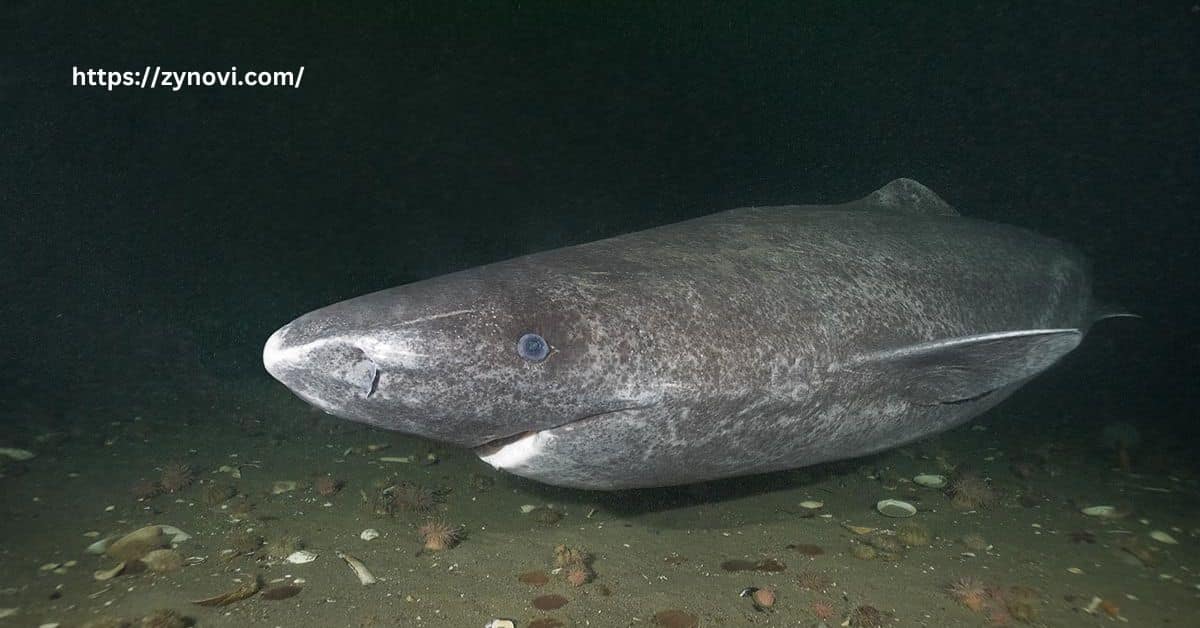Do Greenland sharks attack humans? No, Greenland sharks do not typically attack humans, as they are not considered a threat to people.
It’s a question that might cross your mind if you’re fascinated by these mysterious creatures lurking in the cold depths of the Arctic. Despite their eerie appearance and size, these sharks are rarely a threat to people, but their unusual habits and long lifespan make them a captivating subject to explore.
If you’re curious about what makes the Greenland shark so unique and whether it’s truly dangerous, keep reading. In this article, we’ll dive into the fascinating world of these ancient sharks, uncovering facts that will leave you both surprised and intrigued!
What Are Greenland Sharks?
The Ancient Arctic Giant
Greenland sharks (Somniosus microcephalus) are one of the largest cold-water sharks, ancient and enigmatic deep-sea dwellers, have fascinated marine biologists and ocean enthusiasts for centuries.
Key Characteristics of Greenland Sharks:
| Feature | Description |
|---|---|
| Lifespan | Up to 500 years (longest-lived vertebrate) |
| Size | 10-24 feet (3-7.3 meters) |
| Weight | 880-2,200 pounds (400-1,000 kg) |
| Habitat | Deep-sea, Arctic and North Atlantic waters |
| Diet | Fish, squid, seals, carrion, reindeer |
| Speed | ~1 mph (slowest shark species) |
| Threats | Bycatch, overfishing, climate change |
Habitat and Distribution
Unlike great white sharks or tiger sharks, which are known for their active hunting and predatory nature, Greenland sharks are primarily scavengers.
They rely on opportunistic feeding, meaning they consume dead or dying animals rather than actively hunting live prey.
This behavior is largely due to their slow metabolism, poor eyesight, and deep-sea habitat, making them ill-suited for aggressive predation.
Because of this, Greenland sharks do not pose a threat to humans, as they lack both the speed and instinct to attack living prey.
Do Greenland Sharks Attack Humans?

Understanding Greenland Shark Behavior
- Greenland sharks are non-aggressive, opportunistic feeders that rely on their slow metabolism to survive in extreme cold.
- Unlike apex predators such as the great white shark, they are rarely seen near the surface and prefer to remain in the deep-sea environment where temperatures remain stable.
- Their poor eyesight (due to parasitic copepods that attach to their corneas) further reduces their ability to actively hunt large, fast-moving prey like humans.
Greenland Sharks: A History of Human Encounters
There is no verified record of a Greenland shark attack on a human, making them one of the least threatening shark species.
Unlike bull sharks and great white sharks, which have hundreds of documented attacks, Greenland sharks are slow-moving scavengers that rarely encounter humans.
However, Inuit legends describe them as dangerous, possibly due to misidentification or exaggerated folklore.
Some myths suggest they have attacked boats or people, but no scientific evidence supports these claims.
Why Attacks Are Highly Unlikely
- Extreme Depths: Greenland sharks typically reside at depths of 600-2,400 feet (200-730 meters) in the Arctic Ocean and North Atlantic. These depths are far beyond where humans usually swim, snorkel, or scuba dive, making encounters exceptionally rare.
- Scavenging Nature: Unlike apex predators like great white sharks, Greenland sharks are scavengers that prefer carrion over live prey. They primarily feed on dead fish, marine mammals, and other decaying organisms, making them highly unlikely to hunt humans.
- Slow Movement: Greenland sharks are one of the slowest-moving sharks, averaging a speed of just 1 mph (1.6 km/h). This sluggish movement makes active predation on fast-moving prey, including humans, nearly impossible.
- Limited Encounters: Due to their deep-sea habitat and preference for cold, dark waters, Greenland sharks rarely come into contact with humans. Most encounters occur accidentally, such as when scientists or deep-sea explorers study them, further reducing the likelihood of attacks.
What Do Greenland Sharks Eat?
Greenland sharks are opportunistic feeders with a diet consisting mainly of:
- Fish: Greenland sharks commonly feed on cod, halibut, and flounder, which are abundant in their deep-sea habitat. They use their strong jaws to consume slow-moving or injured fish.
- Marine Mammals: While not active hunters, they have been found with remains of seals, narwhals, and belugas in their stomachs, likely scavenged from dead or dying individuals.
- Squid & Crustaceans: Their diet includes squid, crabs, and other deep-sea invertebrates, which they consume opportunistically when available.
- Scavenged Carcasses: Greenland sharks are scavengers, often feeding on the remains of whales, polar bears, and even reindeer, which they find drifting in the cold Arctic waters.
Their stomach contents have revealed land animals like reindeer and even horses, likely scavenged from drowned or drifting carcasses.
Debunking Myths About Greenland Shark Attacks

There are several misconceptions surrounding Greenland sharks, mostly due to their large size and eerie appearance. Here’s the truth:
Myths vs. Facts About Greenland Sharks
- Myth: Greenland sharks are aggressive hunters.
Fact: Unlike apex predators like great white sharks, Greenland sharks are scavengers, relying on dead or weakened prey rather than actively hunting. Their slow metabolism and sluggish movement make them inefficient hunters. - Myth: There have been reports of Greenland sharks attacking humans.
Fact: Despite their mysterious deep-sea existence, there are zero confirmed cases of a Greenland shark attack on a human. Any alleged encounters are likely misidentifications or folklore. - Myth: They are dangerous due to their massive size.
Fact: Although they can grow up to 24 feet long, Greenland sharks are non-aggressive and lethargic. Their slow-moving nature and preference for scavenging make them harmless to humans.
How Greenland Sharks Compare to Other Potentially Dangerous Sharks
| Shark Species | Speed | Attack Record | Diet |
|---|---|---|---|
| Great White Shark | 25 mph | 333+ attacks | Fish, seals, whales |
| Tiger Shark | 20 mph | 138+ attacks | Fish, birds, turtles, garbage |
| Bull Shark | 25 mph | 121+ attacks | Fish, small mammals, birds |
| Greenland Shark | ~1 mph | 0 attacks | Scavenges dead animals |
As the table illustrates, Greenland sharks pose no real danger to humans compared to other predatory sharks.
Conservation and Protection of Greenland Sharks
Despite their impressive longevity, Greenland sharks face significant threats, including:
Key Threats to Greenland Sharks
- Bycatch: These deep-sea sharks often become unintended victims of commercial fishing, especially in nets targeting cod and halibut. Many are accidentally caught and discarded, affecting their already fragile population.
- Overfishing: While Greenland sharks are not a primary target for fisheries, accidental capture and bycatch significantly reduce their numbers, making them more vulnerable to population decline.
- Climate Change: Rising ocean temperatures disrupt the deep-sea environment these sharks rely on, impacting their slow metabolism and cold-water adaptation while altering their food sources and habitat.
- Marine Pollution: Microplastics, industrial waste, and oil spills contaminate the Arctic Ocean and North Atlantic, posing long-term health risks to Greenland sharks and the marine ecosystem they inhabit.
Conservation Efforts
- Research & Protection: Organizations like the Marine Stewardship Council (MSC) and International Union for Conservation of Nature (IUCN) advocate for sustainable fishing and protection measures to prevent unnecessary Greenland shark deaths.
- Fishing Regulations: Certain regions, including parts of Canada, Greenland, and Norway, have implemented bans or restrictions on bycatch to reduce accidental captures and help preserve their population.
- Public Awareness: Marine biologists and conservationists highlight the ecological importance of Greenland sharks as deep-sea scavengers, dispelling myths that they are dangerous predators.
Final Verdict
The idea that Greenland sharks attack humans is a myth with no scientific backing. These ancient, slow-moving creatures are scavengers, not active hunters, meaning they prefer dead or dying prey over chasing live animals.
Their deep-sea habitat often at depths of 600-2,400 feet makes human encounters extremely rare. While their massive size can be intimidating, their lethargic nature and lack of predatory behavior confirm that they pose no threat to swimmers or divers.
FAQs
Have Greenland sharks ever attacked a human?
There are no recorded incidents of Greenland sharks attacking humans, as they are not considered aggressive towards people.
How aggressive are Greenland sharks?
Greenland sharks are generally not aggressive; they are slow-moving, deep-sea dwellers that prefer to avoid human interaction.
Is Greenland shark friendly?
While not particularly “friendly,” Greenland sharks are not a threat to humans and tend to be more passive and reclusive.
Are Greenland sharks bigger than Great Whites?
Yes, Greenland sharks can grow longer than Great White sharks, reaching lengths up to 24 feet, while Great Whites max out around 20 feet.
Conclusion: Do Greenland Sharks Attack Humans?
Greenland sharks do not attack humans. Despite their massive size and mysterious deep-sea existence, these sharks are harmless and non-aggressive. Unlike great white sharks or tiger sharks, which are known for attacks, Greenland sharks are slow-moving scavengers that prefer carrion over live prey.
Their deep-sea habitat makes encounters with humans extremely rare. Rather than fearing these ancient creatures, we should focus on conservation efforts to protect their fragile marine ecosystem and ensure future generations can continue to study and admire them










